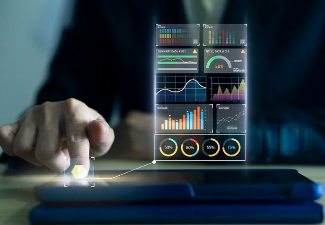POS system, or point-of-sale information system, refers to a system that directly reads product sales information (such as product name, unit price, sales quantity, sales time, sales store, purchasing customer, etc.) through automatic reading equipment (such as cash register) when selling goods, and transmits it to relevant departments through communication networks and computer systems for analysis and processing to improve operating efficiency.
POS system was first used in the retail industry, and then gradually expanded to other service industries such as finance and hotels. The scope of using POS systems has also expanded from within the enterprise to the entire supply chain.
It has functions such as consumption, pre-authorization, and query of payment lists, and is mainly used by special merchants to accept bank card consumption.

POS system, or point-of-sale information system, refers to a system that directly reads product sales information (such as product name, unit price, sales quantity, sales time, sales store, purchasing customer, etc.) through automatic reading equipment (such as cash register) when selling goods, and transmits it to relevant departments through communication networks and computer systems for analysis and processing to improve operating efficiency.
POS system was first used in the retail industry, and then gradually expanded to other service industries such as finance and hotels. The scope of using POS systems has also expanded from within the enterprise to the entire supply chain.
It has functions such as consumption, pre-authorization, and query of payment lists, and is mainly used by special merchants to accept bank card consumption.

The handling fees for domestic consumption POS are as follows:
(1) Airline ticket sales, refueling, and large supermarkets generally have a deduction rate of 0.5% of the consumption amount.
(2) For merchants such as pharmacies, small supermarkets, wholesale departments, specialty stores, clinics, etc. where the POS card consumption amount is not high, the general deduction rate is 1% of the consumption amount.
(3) Hotels, restaurants, entertainment, jewelry, and arts and crafts stores generally have a deduction rate of 2% of the consumption amount.
(4) Real estate and automobile sales merchants generally have a fixed deduction rate, which is charged according to the number of POS card consumption transactions, and each transaction shall not exceed RMB 40 according to regulations.
What are the functions of the POS system?
Identification function
The cashier identification function means that the cashier must log in before work to operate the terminal. That is, the cashiers of each system in the store are uniformly numbered, and each cashier has an ID and password. Only after the cashier enters the correct ID and password can he enter the "sales screen" to operate. At the end of the shift, the cashier must log out of the system to allow other cashiers to use the terminal. If the cashier needs to temporarily leave the terminal during operation, he can put the terminal in the "log out or close" state and log in again when he returns.
Sales function
The POS system has a variety of sales methods. When operating, the cashier can select the following special functions of various sales methods of the goods according to their needs:
(1) Discount and discount function: Discounted goods or special price permissions for the transaction itself, etc., should be subject to permission check.
(2) Sales transaction correction function: including clearing function and transaction cancellation function.
(3) Return function: Usually the cashier does not have the authority to trade this kind of goods and needs to be completed by the management personnel.
(4) Account suspension function: refers to retaining transaction data while the current transaction is not completed, and then proceeding with the cashier operation for the next transaction.
Payment function
The main payment methods include: cash, check, credit card, etc. The POS system has the function of setting up multiple payment methods.
Other functions
(1) Bill query function: The query range can be all transactions within a certain period of time, or the transaction status at a certain point in time.
(2) Report query: Make some simple reports based on the sales data of the cash register itself and print them out on the cash register printer. Reports include payment statements, counter group reconciliation statements, etc.
(3) Front desk inventory: The inventory process is mainly to check the number of inventory items. The essence of front desk inventory is to manually input the information of the items to be counted like selling items or enter it into the cash register with a barcode scanner as the data source for the background.
(4) Working status check function: refers to checking various statuses of the cash register and cashier. Including: general status, transaction status, network status, peripheral status, etc.
MPOS:
MPOS is a new payment product that connects to general smart mobile devices such as mobile phones and tablets, transmits information through the Internet, and uses external devices to complete card reading, PIN input, data encryption and decryption, prompt information display and other operations to achieve payment functions.
The definition of MPOS includes two parts: terminal equipment and related applications. Merchant cashier operations are performed through mobile communication devices (including the payment application software installed), and the external dedicated acceptance terminal completes the collection and encryption of UnionPay card related information, and the transaction is completed through the interaction between the mobile communication device and the background processing system.
Basic usage of POS software:
- Power on and connect devices: Make sure the POS machine is connected to hardware devices such as keyboard, printer, card reader, and connected to power and network.
- System installation and settings: Use the company's GHO system CD to start the POS machine, install and partition the system, and then restore the system. After entering the system, modify the computer name and IP address, install the printer driver and cash register system.
- Log in to the POS system: Use the store account and password to log in to the POS system and start daily retail operations.
- Basic operations: Open the POS cash register system, complete the basic settings according to the system instructions, then scan the code, order, and collect money. The system will automatically record each transaction data.


